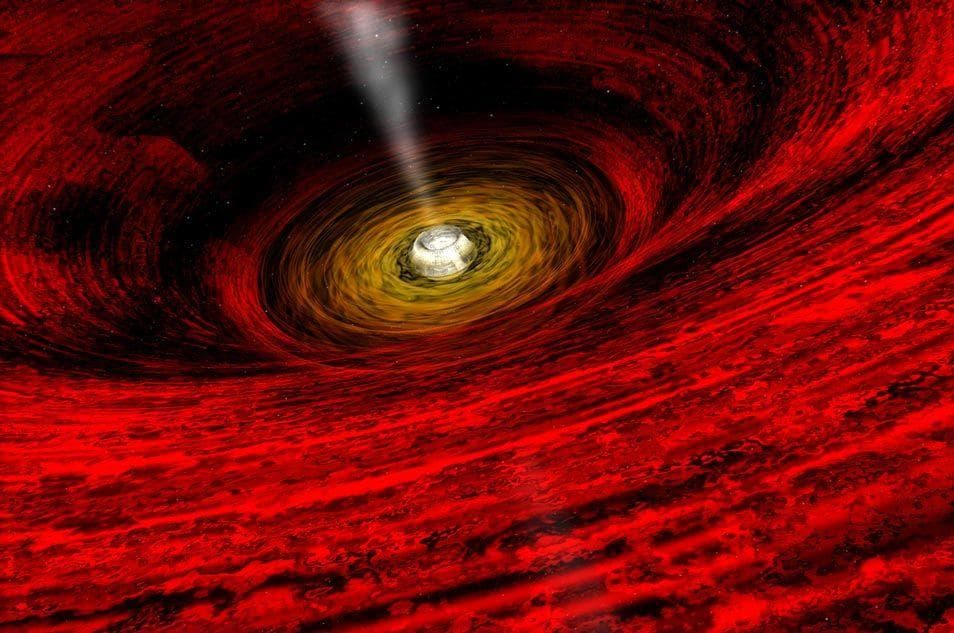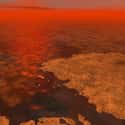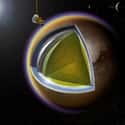-
(#5) It Has Lakes And Seas
Besides Earth, Titan is the only known body in the solar system with stable bodies of liquid on its surface. Titan’s landscape is littered with various lakes and seas, mainly composed of methane and ethane.
Those compounds can exist in liquid form there due to the extreme cold.
-
(#16) It Can't Host People For A Long, Long Time
Making a home on Titan could take a bit of time - four billion years, give or take a few hundred million. That’s when the sun will become a red giant, thereby warming Titan and potentially allowing for liquid water to emerge on the moon. Those conditions could then create indigenous life, and potentially better support humans as well.
It’s certainly a long ways off but, on the bright side, it gives people plenty of time to pack.
-
(#14) It's Hard To Visit
Titan is approximately 746 million miles away from Earth when the two bodies are at their closest. Compare that to Mars, which measured 34.8 million miles away at its record-setting closest point, and which humans are just now contemplating human travel to. In other words, travel to Titan presents something of an advanced engineering problem.
To date, the fastest Earthlings have been able to get a lightweight probe to Titan’s locale is two years and four months, meaning that faster and more powerful engines will be necessary before humans can visit themselves.
-
(#8) It Might Have A Giant Subterranean Ocean
Titan is thought to have a slightly slushy core comprised of rock and ice. But its inner body might also be encircled by a vast subterranean ocean. It’s fun to speculate what might exist in the depths below Titan’s icy surface but, with limited data, scientists can’t yet make detailed predictions about the hypothetical ocean.
Still, the prospect of an underground body of water with volcanic activity raises some researchers' hopes for the potential of extraterrestrial life there.
-
(#13) It's Been Explored
Humans first visited Titan’s region of space in 1979 with the Pioneer 11 probe. The mission reported that Titan was too cold to support life. Voyager 1 observed Titan by flyby in 1980, and while measurements such as mass, density, and surface temperature were obtained, the moon’s orange haze made it difficult to capture images of the surface.
Decades later, the European Space Agency (ESA) and NASA collaborated on the Cassini-Huygens mission, which completed its first flyby of Titan on December 13, 2004. Cassini mapped Titan’s surface by radar, and was able to capture the first high-resolution images of the mystery world.
Cassini deployed the Huygens probe, and it landed on Titan on January 14, 2005. It parachuted to a shoreline, where it used a variety of instruments to try to decrypt Titan’s many surface anomalies. Huygens was able to collect data for approximately 90 minutes, sending some 350 photographs back to Earth.
Cassini's last flyby of Titan is scheduled for April 22, 2017, and the probe's journey ends with a dive into Saturn. But a number of proposals to further explore Titan have already been proposed by ESA, NASA, and JPL, as well as by private companies and individual scientists. Everybody seems to be interested in unraveling the mysteries of this exotic world to see if life is actually possible there.
-
(#7) It Doesn't Have Many Craters
With an ever-changing surface, it’s hard to know how often Titan has been impacted by asteroids or meteors. Since the moon is the size of a small planet, it's likely to have been hit by space debris, though only a few impact sites have been definitively identified.
But as it orbits the solar system’s second largest planet, Titan may be saved from many impacts; Saturn’s immense gravity likely draws in the bulk of passing objects.
New Random Displays Display All By Ranking
About This Tool
Titan is the largest moon orbiting Saturn and the second-largest moon in the solar system. The Dutch physicist and astronomer discovered it in 1655. Titan is currently the only known satellite in the solar system that has a liquid ocean. According to data returned by space probes, Titan’s atmosphere is dominated by nitrogen. Apart from the earth, no second satellite has been found with this characteristic.
Human beings have reasons to believe that Titan is the second celestial body besides the earth that is most suitable for human existence. Titan, like the earth, can rotate to produce seasonal changes, but its seasons last about 7 years. The random tool introduced more facts about Saturn's Moon Titan.
Our data comes from Ranker, If you want to participate in the ranking of items displayed on this page, please click here.
















